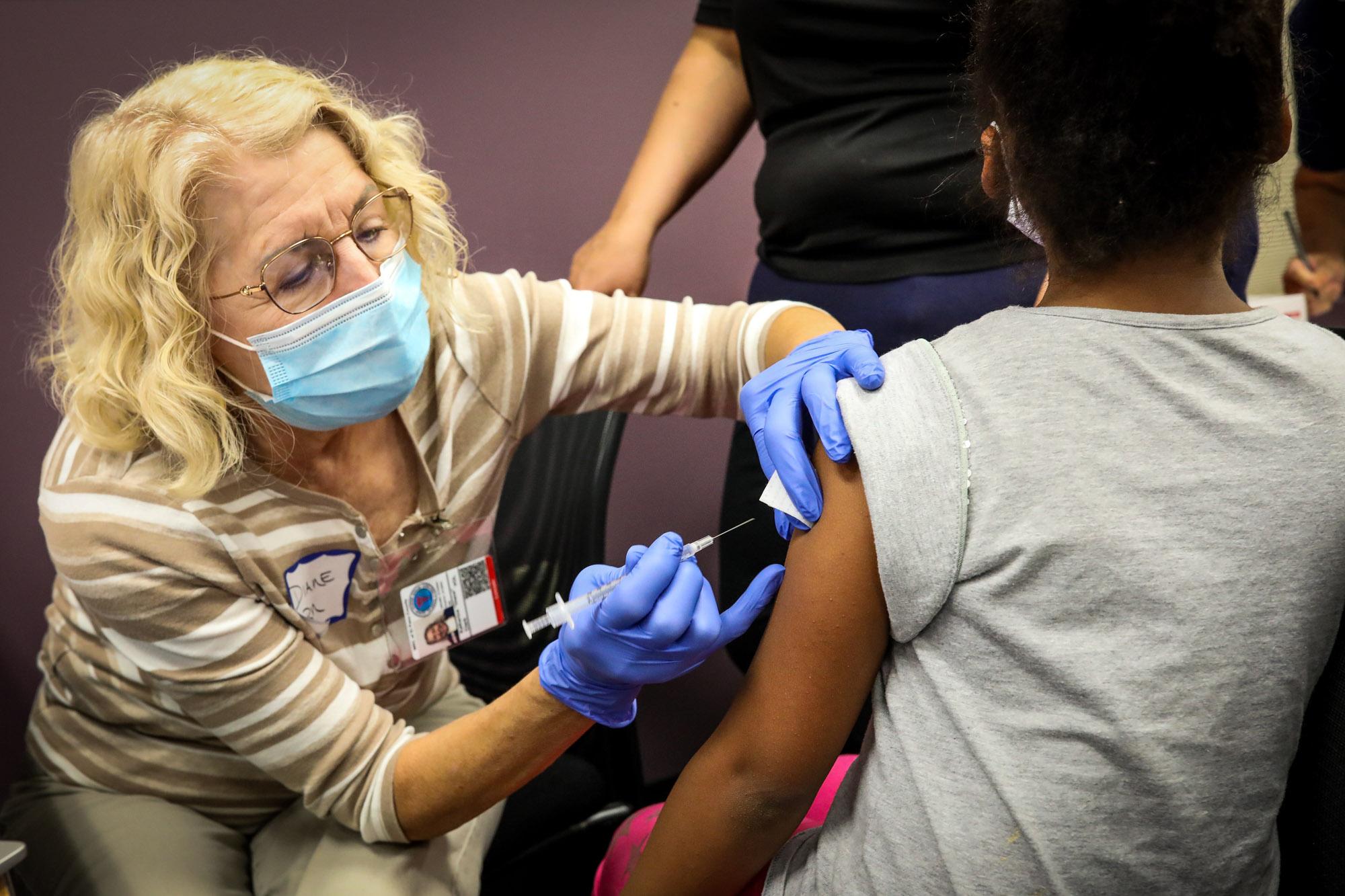
As Coloradans prepare for the holidays, many might be wondering about when to get the newly updated, bivalent COVID-19 booster that offers protection against omicron and its subvariants.
These boosters became widely available earlier this month, and state officials are pushing to get shots into arms before a possible surge of cases this fall and winter.
The updated booster is currently available to anyone 12 or older (depending on the brand) who have completed the initial COVID-19 vaccination series (two doses of Pfizer, Moderna or Novavax or a single dose of Johnson & Johnson). The Centers for Disease Control and Prevention also recommend that a booster recipient be at least two months out from their last dose.
Dr. Diane Janowicz, an infectious disease expert at St. Mary’s Medical Center in Grand Junction, spoke to Colorado Matters host Ryan Warner about the new booster and when to get it.
This interview has been edited for clarity and length.
How is this new bivalent booster different from the original booster?
The original vaccines and booster were monovalent, which means they only contained genetic information for the original coronavirus strain.
The new bivalent booster contains information for both the original strain we’ve seen since 2020 and the most commonly seen one now — omicron and its subvariant BA.5, which we’re seeing causing the most infections in Colorado.
What if someone is fully unvaccinated against COVID-19? Can they get this new booster?
No. They are not eligible. Go ahead and start your vaccine series and then when you’re eligible, get this updated booster because it’s going to offer you more protection from omicron, which we are predicting will be the dominant strain throughout the rest of the year.
Should I skip straight to this new booster if I only have the initial COVID-19 vaccination series (two doses of Pfizer, Moderna or Novavax or a single dose of Johnson & Johnson)?
Yes, absolutely.
Do you trust this booster? What are the potential side effects?
As an infectious disease doctor having looked at the vetting this vaccine went through, we have data that shows that it is effective and safe. The amount of side effects that we see with this booster is about the same and perhaps even lower than what we saw with the original, primary vaccine series.
How long after having COVID-19 can I get this booster?
Right now, the recommendation is that you can get this booster as soon as you are symptom-free and out of the five-day isolation period (or 10 if illness was moderate, according to the CDC). However, usually we recommend you wait two months or up to three months. New data shows that there is some benefit to waiting three months after that infection, whether you’ve been vaccinated or not.
Click here to see the CDC’s latest guidance on isolation.
Should people consider travel plans and gatherings as they decide when to get their booster?
It’s tempting to delay getting the booster with gatherings coming up, but there’s a lot to consider. We know that the effect of the booster really kicks in two weeks after you get the shot.
So let’s say you have a wedding or big family reunion coming up in two weeks, now is the time to get it. Try to get it two weeks before any event or gathering.
But delaying getting this booster does carry inherent risk because we’re still seeing at least 400 COVID-19 deaths a day in the U.S. The virus is still circulating and infecting a lot of people. So if it’s convenient and you have the chance, go now.
Is there any harm in getting both the updated booster and flu shot at the same time?
There is no harm whatsoever. It’s currently recommended that you go ahead and get both your flu and COVID-19 shot. You can get them both in the same arm if you’d prefer to have only one sore arm.
When they’re given at the same time, the side effects are just about the same if you receive one and then the other later on.
CPR News audience editor Obed Manuel contributed to this article.









